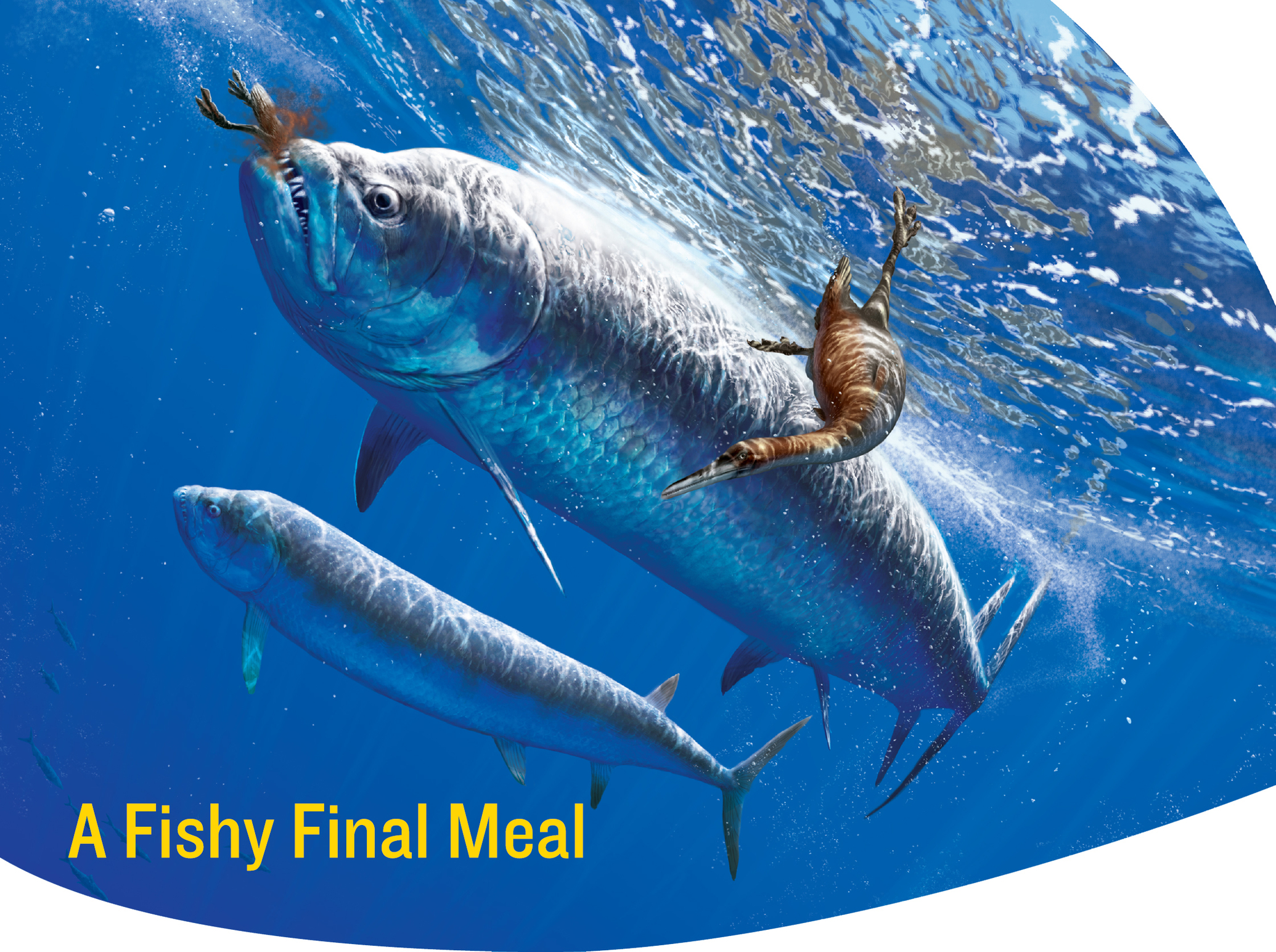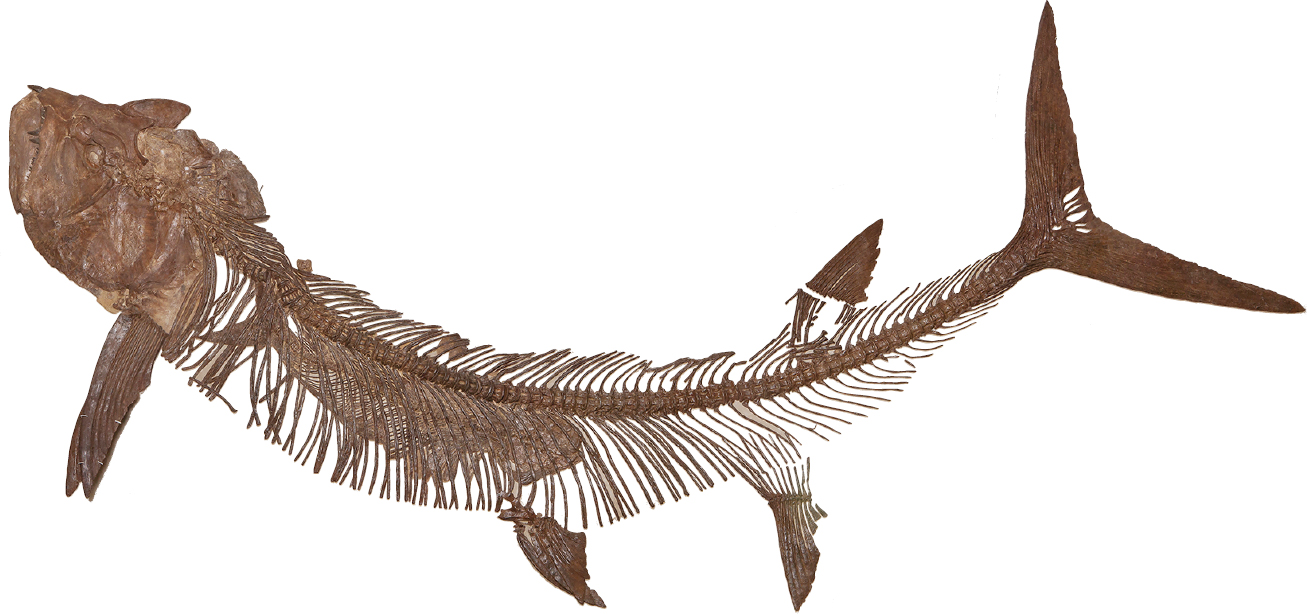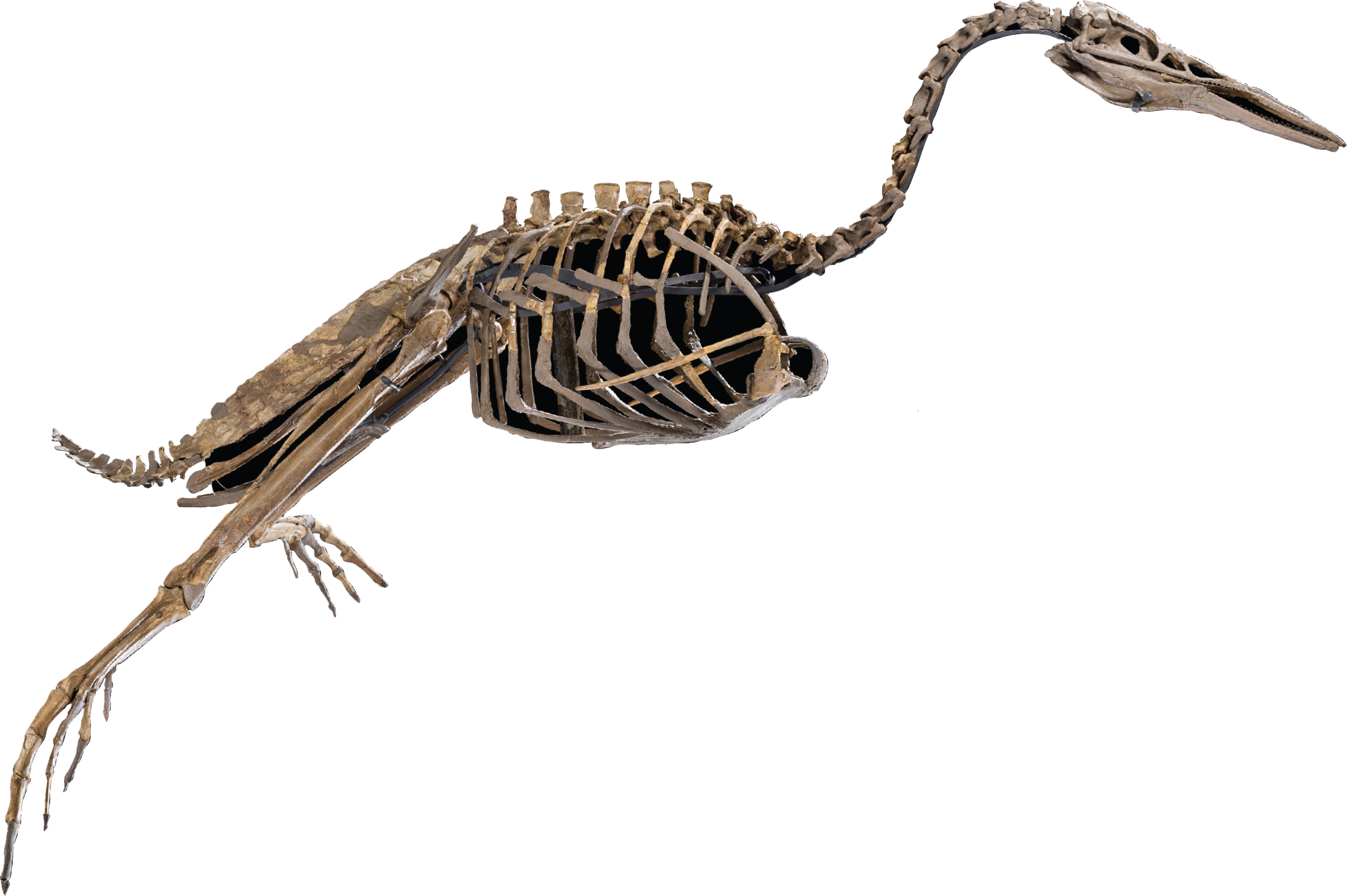

Ocean food webs tend to harbor more predators of different sizes than those on land, and in Late Cretaceous seas, carnivorous fishes were the most abundant hunters. In this mural, a pair of the enormous teleost fish Xiphactinus audax cruise along—one caught in the act of swallowing Hesperornis, the diving bird also shown in the foreground. A similar act of predation has been frozen in time as a fossil: as its last meal, our Xiphactinus swallowed the whole body of another teleost, Thryptodus zitteli. Being a fish—or even a bird—in these waters was risky business.

One fish, two fish: this Thryptodus zitteli was swallowed by a Xiphactinus audax.

The nearly wingless bird Hesperornis regalis lived in the Late Cretaceous and preyed on fishes. It somewhat resembled a modern cormorant, but its beak contained a set of sharp teeth.

The skull of bony-tongued Pachyrhizodus, a fish related to today’s tarpon.